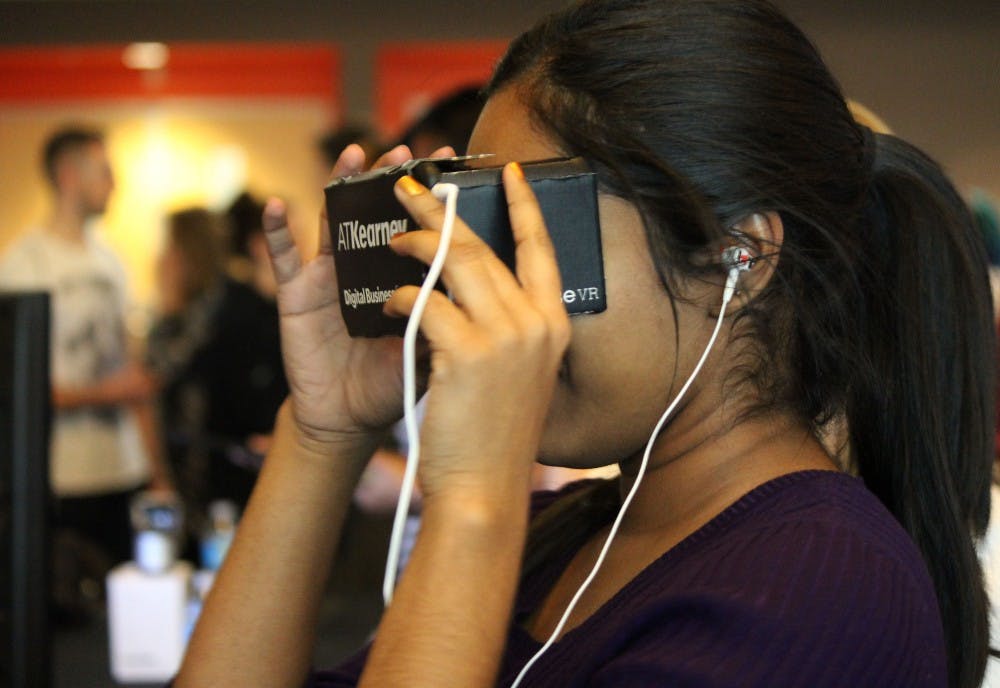Here at ASU, we claim to be the most innovative school in the nation. But, there are always things that can be improved to better education, research and the University as a whole. Specifically, ASU should be looking to implement virtual reality technology in the classroom to improve learning and the educational experience.
Research-wise, ASU has already made significant advances into virtual reality technologies with work like the PRISM Lab, among others. However, the technology has yet to be used in any academic setting with students. Imagine how much more interesting a lecture-based class would be with the utilization of virtual reality. Instead of just discussing history and looking at a PowerPoint, one could explore the ruins or experience an authentic ritual, actually living history instead of just learning from a dry and boring textbook.
Thinking about the applications in the classroom for virtual reality, the possibilities are endless. Across a wide variety of subjects, from anatomy and biology to mathematical modeling and historical literature, virtual reality could be used across many of the classrooms on ASU’s campuses — especially given that many classrooms already have the necessary computer hardware.
One of the biggest problems that ASU faces is retention rate. So far, ASU’s retention rate hovers somewhere around 86 percent for returning first-year freshmen. Obviously, like employment, there are some percentages that are never likely to be 100 percent, but our retention rate can be improved.
Students often cite a lack of utility or engagement in the subjects covered, as sitting in 500-person lecture halls often takes away from an authentic higher learning experience. I can attest personally, that a subject like COM 100 can be particularly boring, even when a lecturer attempts to use personal anecdotes and YouTube snippets to engage students.
In a time period where a majority of learning takes place online, with current resources like Blackboard and eAdvisor already digitized, there is an obvious and natural progression to use technology more and more in the classroom. Other universities have already started pilot programs across the U.S. in an effort to use VR technology. In recent media coverage, I see VR technology covered when it applies to gaming or even porn, but a real lack of reporting when relating to education. Now, when the American education system needs a change from the bottom to the top, ASU has the chance to yet again lead the way in a virtual reality revolution.
Many opponents of VR technology would claim that implementing the technology would cost an exorbitant amount of funds, or that the technology simply isn't conducive to learning, lambasting technological distraction as a reason. As a student, I can personally attest that is far too easy to get distracted by my phone or on my laptop. But ultimately, there is only so much a teacher or administration could do before a certain level of maturity kicks in on the student's behalf to pay attention. And the cost argument is no longer an issue as technology like Google Cardboard, can cost as little as $20 per unit and is specifically designed with students in mind.
Related links:
Virtual reality headsets are coming, and I'm not ready
Virtual field trips provide ASU students with immersive online learning environment
Reach the columnist at akhawaj1@asu.edu or follow @amirkhawaja15 on Twitter.
Editor’s note: The opinions presented in this column are the author’s and do not imply any endorsement from The State Press or its editors.
Want to join the conversation? Send an email to opiniondesk.statepress@gmail.com. Keep letters under 300 words and be sure to include your university affiliation. Anonymity will not be granted.
Like The State Press on Facebook and follow @statepress on Twitter.




